If you’ve read my blog before, you might already know that I’m a big fan of one-on-one reading conferences.
But I didn’t always confer with students individually. For quite a few years, I taught reading through whole group and small group instruction. I always attended to students’ individual needs, of course, but I didn’t carve out time for one-on-one reading conferences in my literacy block.
When I first began utilizing individual reading conferences, I was teaching Kindergarten. It worked out nicely – I had 30 or 45 minutes for guided reading groups and literacy centers, and then I had a separate 20 or so minutes for independent reading time. At this particular school, I had a ton of control over and flexibility in my schedule, so fitting in both small group instruction and one-on-one conferences was not a problem.
Then, my husband and I moved and I switched schools. I wanted to continue using small group and individual instruction, but it wasn’t so easy this time. At this particular school, I had very little control over my schedule and what I was teaching when.
I still wanted to implement a reading workshop type of model, utilizing both individual and small group instruction to teach reading (in addition to whole group instruction). But I only had about 40-45 minutes (sometimes less) to fit in both guided reading AND individual conferences.
For most of the year, I struggled to find the right balance. I wondered things like: Do I prioritize guided reading since I can see more kids that way? Do I squeeze in individual conferences wherever I can, or do I schedule them out? Do I keep the same schedule each day and each week? My school and district expected me to implement guided reading on a regular basis, so I also had to keep that in mind.
I certainly didn’t come up with any sort of magic formula, but I did find a few tricks that helped me balance small group and individual instruction. In today’s post, I’ll share what has worked for me!
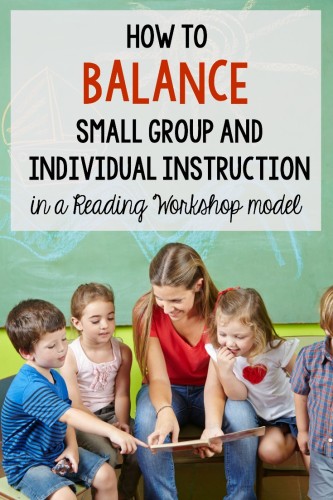
Photo credit: Robert Kneschke, Shutterstock
Disclosure: This post contains an Amazon affiliate link.
Shift Your Mindset
Having taught guided reading for years, I had it in my head that I needed to see each group a certain number of times per week. I made sure to see my two lowest groups the most often.
However, when I changed schools, I also had to change my mindset. Instead of asking myself, “How many times did I meet with Group 1 in a given week?,” I had to begin asking myself, “Am I meeting the needs of the readers in Group 1 over time?”
I had to let go of my own rules about meeting with groups and develop a more flexible mindset. I realized that even if I only met with my “high” group once in a given week, I could meet with them more often in the following week. And even if I didn’t meet with my lowest group every day, I was still meeting those readers’ needs by “filling in the gaps” with individual reading conferences.
Here’s a FREE sheet that you can use to help track your work with students over time. You fill in students’ names in the first column (it’s easiest if you group them by reading group rather than alphabetically), and then place a checkmark (or write the date) when you see them in a small group or whole group setting in the columns to the right.
I encourage you to use this sheet for 2-3 weeks, not just over the course of one week. This will help you notice how you are working with students over time, and if there are any imbalances in terms of how you are meeting with certain students.
Make a Flexible Schedule
As I mentioned in the section above, you may need to develop a more flexible schedule if you want to see students in small groups and individually. This was hard for me, because I am definitely a schedule-loving lady! But if you are struggling to balance these two types of instruction, a schedule that stays the same each week may not be the best solution for your classroom.
Below is an example of what your schedule could look like (with a 40 minute independent work period for you to meet with groups and individuals – if you have more time, great!). I’ve included three weeks because it’s more important to pay attention to how you are meeting students’ needs over time than it is to have a rigid weekly schedule.
You can download it (just click on the image) and take a closer look – notice how my guided reading group schedule changes from week to week in order to “catch up” when I only don’t get to meet much with one group in the previous week (the groups are ranked from lowest to highest, 1 to 5).
You’ll also notice that each student gets met with individually about once every two weeks (in this particular example).
Something else that helps is to make up your schedule just a couple of days at a time. Although I might have a general idea of how many small groups I want to see and how many conferences I want to hold in a given week, I wouldn’t necessarily sit down and schedule out several weeks at a time.
An important part of the reading workshop model is adapting your instruction to meet students’ needs. If I notice that a handful of children are struggling with the focus skill for the week, then I need to have the flexibility to schedule in an extra small group meeting to provide them with extra help.
Use Small Group Instruction Flexibly
Sometimes the terms “small group instruction” and “guided reading” are used synonymously – to mean the same thing. But actually, guided reading is just one specific structure that you can use to teach students in small groups.
There are lots of other wonderful ways to teach reading in a small group. You can…
- Do shared reading in a small group (I do this frequently with my Kindergarten students who struggle with print concepts and oral language)
- Do a readaloud in a small group (great for ELLs or those quieter students who tend to get lost in a large group – if you preview a text and then read it again to the whole class, they will be better able to participate in the whole group discussion)
- Have a “book club” style discussion (have students read a beginning chapter book or other longer book independently, and bring them together to talk about a chapter or two at a time)
When you implement these types of small group instruction, you don’t have to meet with students who are all at the same instructional reading level. You can meet with students at different levels who have similar needs, and sometimes you may want to intentionally bring together mixed-ability groups of students so that the higher children can serve as models for the struggling students.
Another thing I love to do is have what I call “small group reading conferences.” This is a strategy that helps me knock out multiple reading conferences at a time.
When I know that I want to hold individual reading conferences with several students but am pressed for time, I have them all bring their book bags to my guided reading table. They read quietly and independently while I take turns conferring with them. This way, I don’t have to hop around the room and bring my conferring bag with me – all the kids are right in front of me!
Although I don’t always provide any instruction during “small group reading conferences,” I can start with a mini-mini-minilesson if all students need to practice a certain strategy. I review/teach the strategy, and then have students try it out as they read independently at my table. I can check in with them individually, and it gives them a chance to try out a strategy in a book that they independently chose to read. When I use this type of small group instruction, the students don’t all have to be reading at the same instructional level.
Use Reading Conferences Flexibly
Just as you can be flexible with instruction in your small groups, it’s also helpful to be flexible in the way that you hold reading conferences. I usually follow an observe-compliment-teach pattern for my conferences, and they last about 5 minutes (sometimes longer, if I’m not careful).
But your conferences don’t all have to follow that pattern. It’s often helpful to do quick check-in conferences with your students that just last for a minute (I think I got this idea from Jennifer Serravallo’s and Gravity Goldberg’s book Conferring with Readers).
For example, if you had a conference with Sandi on Monday and taught her to use word chunks when sounding out longer words, you’ll want to know if she’s actually doing that. On Wednesday, you can do a quick check-in conference where you listen to her read for just a minute or two and see if she’s applying the strategy.
I can also use quick conferences to ensure that students start off independent reading on the right foot. If I have a student who has trouble getting settled in, I can start independent work time off by listening to her read for a minute, and then I can move on to small group instruction or other reading conferences.
Conclusions
I’ve used the word “flexible” an awful LOT in this post! I think that when it comes down to it, finding a balance between small group and individual instruction is all about being flexible in our scheduling, grouping, and instructional decision-making.
And – honestly – is it really possible to have a truly perfect balance? I don’t think so. But being flexible helps up correct our course when we notice that we are leaning too far in one direction or the other.
If you use the reading workshop model in your primary grades classroom, I have some materials that might be helpful for you.
I have reading comprehension minilessons for Kindergarten and first grade (there are specific instructions for differentiation so that you can meet the needs of students in either grade level). I also have reading workshop minilessons for 2nd grade that address comprehension, decoding, vocabulary, and fluency.
You can try out just one unit at a time or buy the bundles at a discounted price. Feel free to contact me if you have any questions!

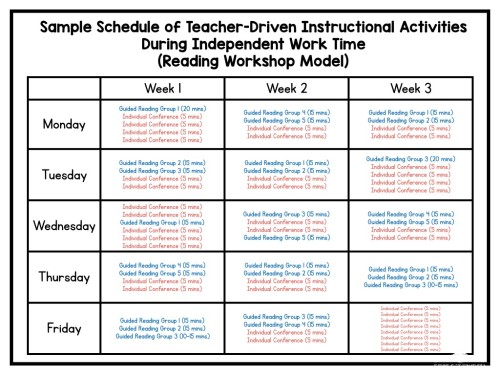
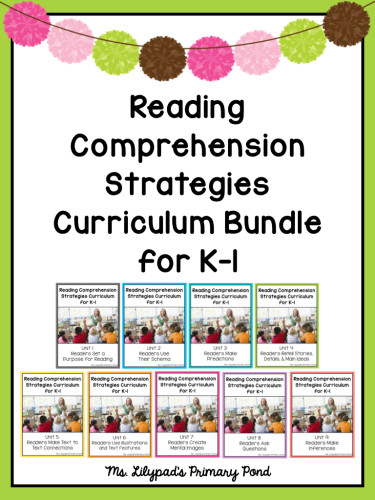
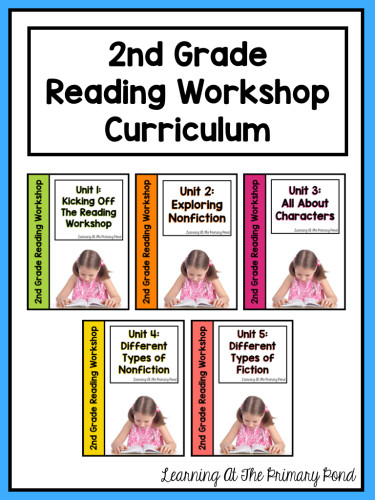


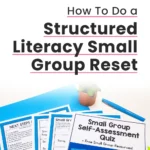
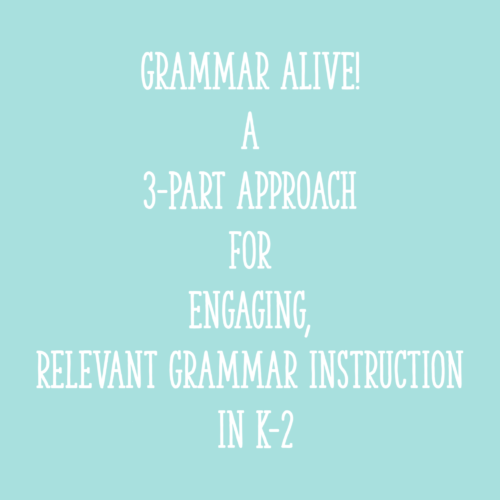
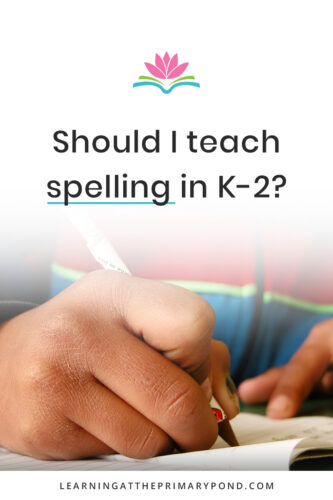






Thank you so much for this post!!! My divisions is starting to move to the workshop model but is giving flexibility on how we use it….I was having a hard time starting to wrap my head around it all but this helps so much!!
So glad it’s helpful, Lisa!! Thanks for reading and commenting! 🙂
Alison
Thank you Alison, I just wrote to you thanking you for creating Writing Workshop (opinion) curriculum. I am going to use your lessons and resources on Monday. I also wanted to thank you for this blog. We are implementing Workshop in full force next year and this is a great insight into how to get it done.
Hi Cristina! I’m so excited for you! I hope the workshop implementation goes well – thanks for getting in touch with me and commenting! I’m always here if you have questions!!
Alison
Hi! Do you have resources for teaching reading strategies? I love the way you present all your information about guided reading!
Hi Margie! I have a couple of things that might be helpful:
– Blog post: https://learningattheprimarypond.com/blog/apply-reading-strategies-independently/
– Visuals for teaching reading strategies (if you own anything from my guided reading series, though, this might be redundant): https://www.teacherspayteachers.com/Product/Reading-Workshop-Toolkit-for-Kindergarten-and-First-Grade-2100298 or https://www.teacherspayteachers.com/Product/Reading-Workshop-Toolkit-for-Second-and-Third-Grade-2188973
– Units for K-1: https://www.teacherspayteachers.com/Product/Reading-Comprehension-Strategies-Curriculum-for-Kindergarten-and-First-Grade-482321 or 2nd: https://www.teacherspayteachers.com/Product/Reading-Workshop-Curriculum-Bundle-for-Second-Grade-1217532
I hope this helps! Let me know if you have any questions!
Alison
Do you mind sharing the professional texts you’ve read that have helped develop your teaching philosophy as it pertains for guided reading groups and reading conferences? I’m ready to do some self-led professional development, but I’m looking for direction as far as which books to pick up!
Hey Lauren! Here are five of my favorites, in this post: https://learningattheprimarypond.com/blog/5-favorite-books-literacy-instruction/
Other favorites are Jan Richardson’s Next Steps in Guided Reading and the Fountas and Pinnell book, Guided Reading: Good First Teaching for All Children. 🙂
Alison
This is right on point for me! Just last week I realzed that if I did not get hung up on a schedule, I was able to do guided reading groups with all my first graders. We also teach the Maisa Units workshop model for reading and writing. So I do a mini-lesson, they read independently for 35-40 minutes, and I pull groups. It’s doable as long as there aren’t other interruptions in my day.
That’s awesome!! It’s easy to get hung up on scheduling (for me, anyway!) but I’m glad you worked it out!
Alison